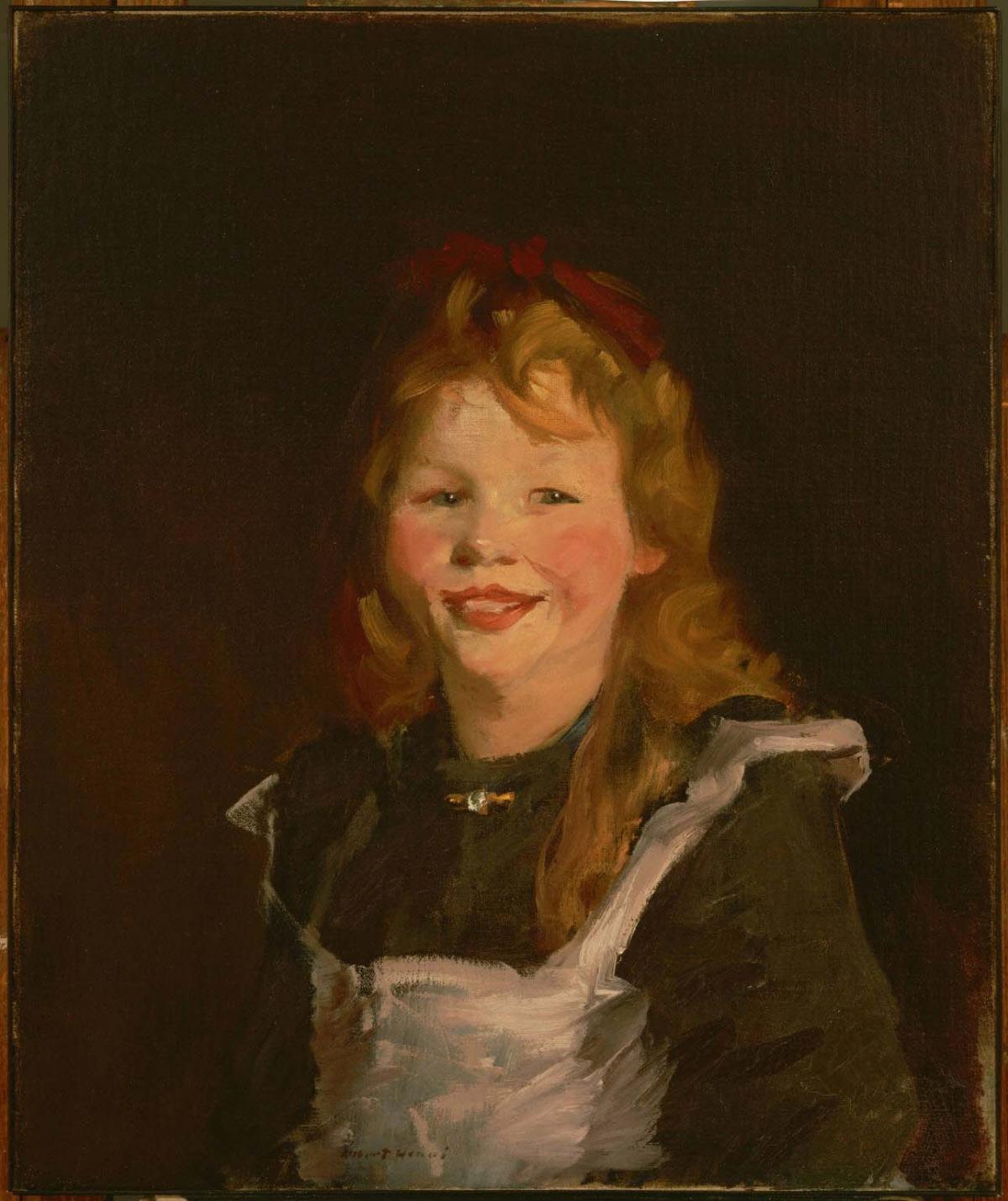Dutch Girl
Robert Henri ( 1910/reworked 1913, 1919 )

Robert Henri emerged onto the New York scene at the turn of the twentieth century as an artist working in the realist tradition, combining the immediacy of expression with subjects from everyday life. He arrived at realism through the influence of his teacher and teacher’s predecessor at the Pennsylvania Academy of Fine arts, Thomas Anshutz and Thomas Eakins. On the occasion of his first one-person show at Macbeth Galleries in New York, Henri was treated disparagingly by the more conservative critics for executing seemingly incomplete paintings, predominantly landscapes which lacked in academic finish and detail. The criticism, coupled with his recent award of the silver medal for his figure paintings at the Pan-American Exposition in Buffalo, caused him to abandon landscape for portraiture despite that his friend and colleague, John Sloan had said that “the game of getting portraits to paint was rather beneath his powers.” For models, Henri used his friends and, during the summer months, the natives of the places he visited.
In the summers of 1907 and 1910, Henri traveled to Haarlem, The Netherlands where he painted many portraits of the local people, including Dutch Girl. The loose, painterly brushstrokes in Dutch Girl show Henri’s discovery and indebtedness to the Dutch master from Haarlem, Franz Hals. Henri’s fluid brushwork became frenetic. He would later tell his students, “finish as quickly as you can… get the greatest possibility of expression in the larger masses first. Then the features in their greatest simplicity… Do it all in one sitting if you can. In one minute if you can.”